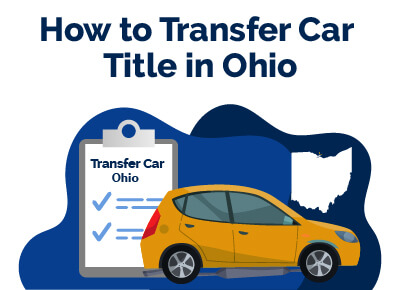How To Transfer Car Title in Ohio
June 5, 2023


Chris is Head of Content for FindTheBestCarPrice and is based out of Philadelphia, PA. As a seasoned automotive industry analyst and car enthusiast, he ensures the highest level of quality across all our content and curates our picks for the best deals each month.
Chris studied information systems and marketing at Drexel University and writes about a wide range of topics ranging from car buying tips to troubleshooting common mechanical issues.
When he’s not thinking about cars, he likes to stay in with his dog and make an “attempt” to finish a crossword puzzle (he’s not quite at the Saturday/Sunday level…yet). As a former cheesemonger, Chris still has a “sharp” passion for all things cheese, and his fridge is always loaded with it!
Chris also has a passion for things that go fast, and drones are no exception. He spends some of his time writing for Dronesourced.
Do you need to know how to transfer a car title in Ohio? Don’t worry; this article will provide a detailed guide for each car-selling scenario. Whether selling, buying, donating, or gifting a vehicle, we will explain the steps to transfer the title, with a clear breakdown of required forms, locations, and documents.
They will typically handle the title process if you’re purchasing a car from a dealership. However, in all other situations, the responsibility falls on you. Throughout this guide, we will assist you in navigating the process for each situation, so you can quickly transfer the title in Ohio.
Procuring, selling, contributing, or gifting an automobile can prove to be a complicated undertaking. However, with this guide, you will fully understand all the essential aspects necessary to consummate the title transfer accurately.
Table of Contents
- What Is a Car Title?
- How To Transfer Car Title in Ohio When Selling
- How To Transfer Car Title in Ohio When Buying
- How To Transfer Car Title in Ohio When the Vehicle Is Registered Out of State
- How To Transfer Car Title in Ohio If You’re Inheriting the Car
- How To Transfer Car Title in Ohio If You’re Donating the Car
- How Much Does It Cost To Transfer a Title?
- How To Fill Out the Transfer of Title Form
- Best Car Deals by Category
What Is a Car Title?
The title of a vehicle is an authoritative record that contains comprehensive information regarding the car, including the name of its proprietor - a crucial detail.
In Ohio, possessing a title in your name is mandatory to comply with the law upon purchasing a car. Moreover, completing the title transfer will furnish you with a valuable document that can serve as evidence of ownership, should such a matter arise.
Transferring a car title in Ohio is relatively straightforward and can be accomplished by following a few uncomplicated steps. Initially, the seller must relinquish ownership by officially signing over the title.
Subsequently, the buyer can visit the Department of Motor Vehicles to request a new title.
It is imperative to prepare the necessary documents early since, under Ohio state law, you have a 30-day window after the transaction to finalize the title transfer. Failing to do so will result in a fine of $5.
How To Transfer Car Title in Ohio When Selling
If you intend to sell your car, you must fulfill certain obligations before transferring the title. Firstly, you must meticulously record details of the transaction on the title, ensuring that there is verifiable evidence of when and how the sale took place.
Ordinarily, the page of the title offers a designated area for these particulars, encompassing the sale’s date, your comprehensive name and address, the complete name and address of the purchaser, the current mileage indicated on the odometer, and the concluding purchase price.
Given that this document is lawfully binding and immutable, it is crucial to be scrupulous in your documentation, giving close attention to minutiae such as the odometer reading and the precise orthography of the buyer’s cognomen.
Before finalizing the transfer, it is wise to create a copy of this side of the document as proof of the sale, should there be any future legal or financial disputes.
Following this, affix your signature to the document and have it notarized. Notaries are typically found at post offices or banks.
You should bring identification with you to the notary appointment, where the notary will confirm that the signature on the document belongs to you.
Under Ohio state law, it is mandatory to have signatures notarized when transferring a car title. Once this process is completed, you may deliver the title to the new owner.
How To Transfer Car Title in Ohio When Buying
The buyer’s obligations in the title transfer process are comparatively complex, but after procuring the requisite documentation, the process should be completed within a few hours.
The initial step involves receiving the title from the seller, where the transfer details have already been jotted down on the rear end of the document. Verifying the information provided, including the price, mileage, and personal information, is crucial.
To officially transfer the title with the state of Ohio, make an appointment with the local County of Clerks Title Office and submit the paperwork. The title office would require you to complete the title application beforehand.
It would be best to visit the Bureau of Motor Vehicles’ website to locate and download the application, a brief one-page form requesting personal details about you, the vehicle, and the sale. After completing the form, sign it and have it notarized by a notary.
Additionally, gather the necessary documents while waiting for the title transfer to be approved.
Contact the local title office to learn about the types of identification they accept since it may vary from place to place. Here are the necessary items you should bring to the title office:
- The notarized original title.
- The notarized title application.
- Personal identification.
- Payment for taxes and fees.
- A Vehicle Identification Number (VIN) inspection if you purchased the car outside Ohio.
How To Transfer Car Title in Ohio When the Vehicle Is Registered Out of State
Upon procuring a vehicle registered out of state and sold by a private party, the seller must endorse the title to you and have it notarized.
An authorized Ohio new car dealer must inspect any out-of-state vehicles to be transferred to an Ohio title. Getting the Vehicle Identification Number (VIN) verified is also advisable, which can be accomplished by taking the vehicle to any Ohio deputy registrar license agency.
It is crucial to note that the VIN inspection form is valid for only 30 days. Therefore, presenting this form and the out-of-state title to the title bureau with a time delay is imperative to avoid expiration.
How To Transfer Car Title in Ohio If You’re Inheriting the Car
If you are inheriting a car, the process differs. In all cases of car inheritance, it is necessary to present a death certificate.
There is a maximum limit of two cars that a surviving spouse can inherit from the deceased. In the case of a probated will, the court decides who owns the vehicle(s).
To transfer the vehicle’s title, the deceased’s surviving spouse must complete and submit a surviving spouse affidavit at the title office.
If the vehicle was jointly owned and the surviving spouse is named on the title, they can complete the transfer process themselves, although they still need to submit a death certificate to the title office.
How To Transfer Car Title in Ohio If You’re Donating the Car
When giving out a vehicle in Ohio, the initial step towards transferring the title is to relinquish your ownership by signing line 1 of section 3 on the reverse of the title.
If there exists (or existed) a lien on the vehicle, the lienholder must sign below the lien discharge section on the title’s front.
Following that, you must release yourself from any future liability associated with the vehicle. This can be accomplished by submitting the Customer Request to Cancel Vehicle Registration form.
Take this form, your plates, and the bill of sale to the Bureau of Motor Vehicles office. Alternatively, you can also send these documents via mail.
How Much Does It Cost To Transfer a Title?
Fortunately, an Ohio title transfer is not an unreasonable procedure. The state charges a nominal fee of $15 for issuing a new vehicle title.
Additionally, if you purchased a car with attached financing, a lien notation will cost another $15. Moreover, an extra $6.50 is charged for the inspection if the vehicle was procured from outside Ohio.
It is crucial to remember that you are obligated to pay sales tax to the state of Ohio, even if you acquired the car from a private seller. You must pay the vehicle’s purchase price tax at the title office.
Hence, calculate the amount in advance and check with the office about acceptable payment methods. Remember that a late fee of $5 is levied if you exceed the 30-day limit to transfer the title.
How To Fill Out the Transfer of Title Form
Completing an Ohio vehicle title transfer form is a straightforward process. In the initial section, you will provide your basic personal information.
The subsequent step is to select the appropriate box indicating the type of title you require:
- An original title certificate.
- A duplicate title.
- A replacement or memorandum title.
- A salvage title.
Only the section about your chosen box needs to be completed. Once done, sign the form and get it notarized. You can obtain the Application for Certificate of Title to a Motor Vehicle (Form BMV3774) from the Ohio DMV website.
Best Car Deals by Category
Posted in Car Buying Tips, Car Troubleshooting |




